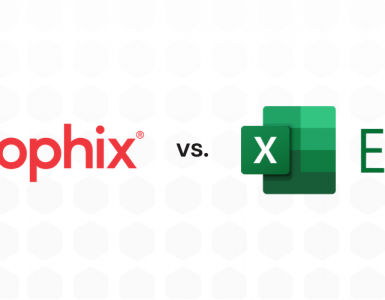We are living in unprecedented and uncertain times. The rapid spread of COVID-19 has disrupted businesses around the world, rapidly changing market conditions and rendering most corporate 2020 plans futile.
The coronavirus is a stark reminder of the volatility of our global business environment.
For many C-suite executives, it’s hard enough to accurately budget, plan, and forecast. When faced with an evolving and unpredictable situation, CFOs must quickly evaluate the impact on their organization’s revenue planning, costs, production, headcount, and overall business performance. This puts significant pressure on CFOs, as well as finance teams, to manage the financial implications of the current pandemic and position their company for continued success moving forward.
Today, we’ll look at what CFOs around the globe can do to quickly respond to changing conditions and ensure business continuity, while improving planning processes and minimizing organizational risk.
1. Create a Business Continuity Plan
First and foremost, executive leadership and finance teams should focus on developing a plan for business continuity.
A business continuity plan is an outline of the policies and procedures that will keep your company running during major disruptions. This can include but is not limited to a reassessment of capital investments, evaluating existing cash flow, and devising a plan to acquire debt.
For most organizations, the Office of Finance will play a critical role in the creation of the business continuity plan, as they have the most insight into the company’s data and financial health.
However, to assemble an accurate continuity plan, finance professionals should consider the following:
- “What-if” scenarios,
- Cross-company financial planning,
- Forecasting,
- And Budgeting.
2. Prepare for a Successful Tomorrow with Scenario Planning
As a result of COVID-19’s impact on the markets, finance teams must consider countless “what-if” scenarios, such as:
- How long will the outbreak last and how will it affect the markets?
- What unpredicted costs will we incur (i.e. production, real estate, equipment, headcount)?
- What liabilities might we incur?
- How will this impact our workforce?
- How will this impact our revenue and profitability?
All of these are valid concerns and questions that the Office of Finance must endeavor to answer.
Luckily, there are processes and software that can minimize the time, effort, and errors associated with spreadsheet-based planning processes that would traditionally be used to model these “what-if” scenarios.
Corporate Performance Management (CPM) software can easily model “what-if” scenarios to provide insight into your businesses’ potential future state, helping you reorganize and plan for a successful tomorrow. At the foundation of successful “what-if” scenario planning is cross-company financial planning.
Take a proactive approach to scenario planning with our upcoming webinar series – register today.
3. Leverage the Collaborative Nature of Cross-Company Financial Planning
Never has there been a more opportune time for businesses to leverage agile cross-company financial planning to rapidly plan for the future with a detailed and collaborative approach. Cross-company planning incorporates key business variables into a budget and flexible plan that can adapt to growth and uncertainty.
At the foundation of agile cross-company planning are three pillars:
- People – Foster an environment of collaboration by identifying, including, and empowering key roles within your company. With the right processes and technology in place, it should be easier to keep your stakeholders engaged in the process.
- Process – It’s a best practice to map the planning cycle and have regular touchpoints to follow-up on. It is also helpful to employ a tool that can help you drive your processes through workflows.
- Technology – Your technology should integrate with all your business systems and enable you to have a single view of your data. This purpose-built tool should bring together your people and processes to facilitate budgeting, planning, and forecasting processes, while also providing insights to your stakeholders. Many finance-specific solutions can also simplify high-value repeatable processes like dynamic or rolling forecasts (more on that later!).
The primary benefit of cross-company financial planning is that it centralizes your data from disparate systems. As such, it is best suited to businesses that have different employees, departments, and systems that handle financial data.
With a financial planning solution like Prophix, your data is immediately accessible to all users, allowing them to evaluate the financial performance of your organization through the lens of their expertise. This will enable you to quickly and accurately evaluate the profitability of your business in the coming years, giving you a distinct competitive advantage. This type of centralized data is not available to those companies that are still leveraging manual processes and spreadsheets.
The collaborative nature of cross-company planning encourages the finance department to involve a wider set of stakeholders, which is critical during periods of uncertainty. The more perspectives involved in the planning process, the better equipped the company is to deal with foreseen and unforeseen outcomes. Collaboration is optimized with a cloud-based CPM solution. Cloud not only offers a highly available and scalable solution, but it is also available 24/7 to anyone, anytime with an internet-connected device.
Next, let’s look at the necessity of forecasting, which is similar to the forward-looking collaborative nature of financial planning.
4. Reduce Risk with Rolling Forecasts
With the right tools and processes in place, many companies can create rolling short-, medium-, and long-term forecasts for their company. Rolling forecasts allow you to “view opportunities and challenges beyond the fiscal year and to fight the myopia that comes with an overemphasis on current-year targets” (CFODive). This can provide an “incentive for long-term, value-maximizing behavior over short-term, bonus/target-based decisions rooted in the current fiscal year” (CFODive).
Rolling forecasts are a critical part of the risk management process, especially in light of current economic and social conditions. Corporate Performance Management (CPM) software can assist finance departments in compiling and analyzing the data necessary for a long-term forecast, as well as “what-if” scenarios and cross-company budget and planning, which are critical parts of a business continuity plan.
5. Unlock Your Budget
It’s only March but it’s likely your 2020 budgets and forecasts are no longer relevant. Now is the time to “unlock your budget” and reconsider what line items are critical to your businesses’ success (CFO).
CFO recommends that CFOs “address the risks and opportunities posed by a range of virus scenarios, building high-level models of business cases to quantify the impact to P&L, cash flow, and balance sheet” (CFO). Further suggestions include assessing the implications on productivity, investigating potential hidden costs, and addressing driver-based scenarios (i.e. customer regions, units, and pricing, quarterly phasing/timing, etc.) (CFO). This can be done in conjunction with your rolling forecasts to give you a better understanding of all possible scenarios, which can further inform your business continuity plan.
Hope on the Horizon
“The mistake is thinking that there can be an antidote for uncertainty.”
– David Levithan
While the outlook for the coming months is still unclear, there is no need to panic. The business world will always be filled with some level of uncertainty – it’s how you react to it that determines your success.
In the coming weeks, businesses should aim to assemble a business continuity plan that includes “what-if” scenarios, a short-, medium- or long-term forecast, and a cross-company financial budget and plan.
Businesses that are still using spreadsheets as their primary finance tool should look to adopt a Corporate Performance Management (CPM) solution to automate and accelerate their financial processes, while improving accuracy and reducing organizational risk.







